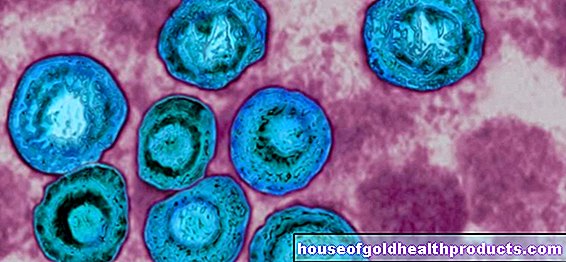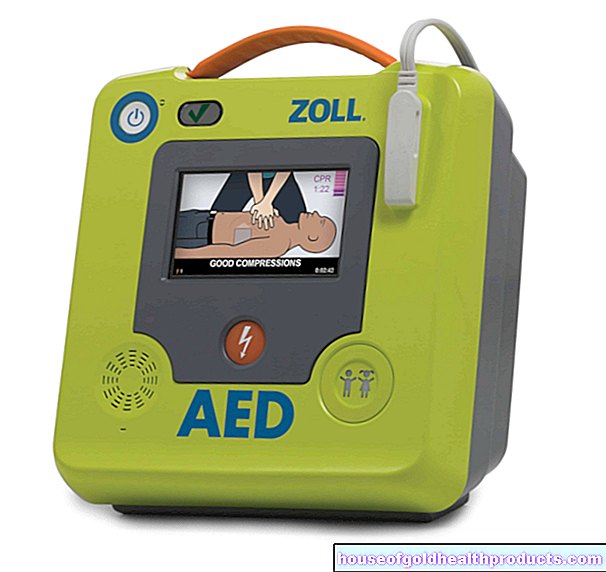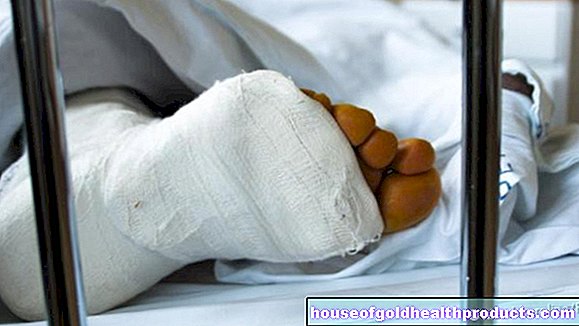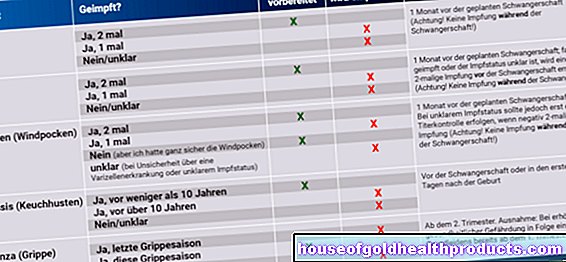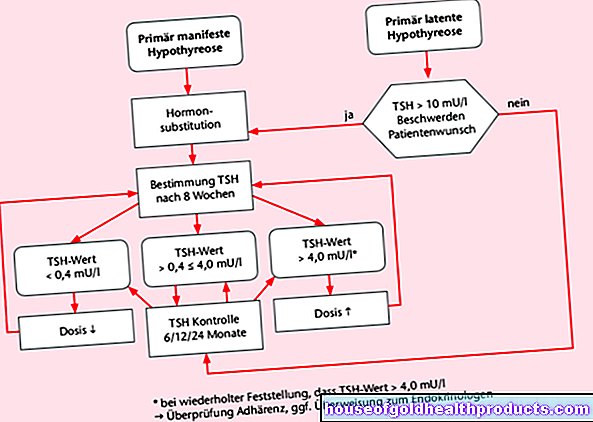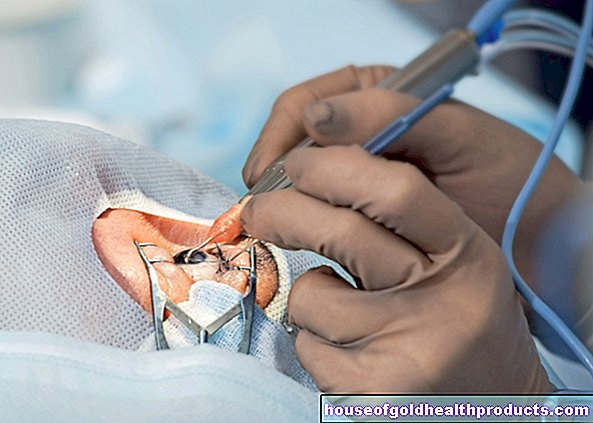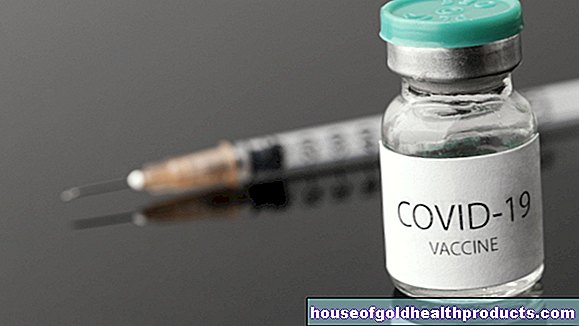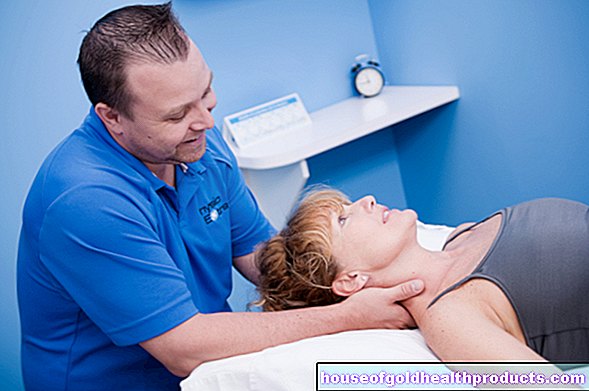Levodopa
Benjamin Clanner-Engelshofen is a freelance writer in the medical department. He studied biochemistry and pharmacy in Munich and Cambridge / Boston (USA) and noticed early on that he particularly enjoyed the interface between medicine and science. That is why he went on to study human medicine.
More about the experts All content is checked by medical journalists.The active ingredient levodopa is a precursor to the neurotransmitter dopamine in the brain. As a so-called “prodrug”, it is only converted into effective dopamine in the brain. It is protected from premature degradation by combining it with other active ingredients such as benserazide or carbidopa. Here you can read everything you need to know about the effects and use of levodopa, side effects and interactions.
This is how levodopa works
The neurotransmitter dopamine is used in the brain to transmit signals between nerve cells - especially those that are involved in controlling movement. An important region for this is the “substantia nigra” (Latin for “black substance”) in the midbrain. If dopamine-producing nerve cells die there, Parkinson's disease occurs.
Dopamine is produced in the body from the natural amino acid (protein building block) tyrosine. This is converted into the intermediate levodopa and then further into dopamine. Dopamine itself cannot be given to Parkinson's patients because it cannot cross the blood-brain barrier. In addition, it would lead to a large number of peripheral (body-related) side effects. These two problems are circumvented in therapy with levodopa - it is a preliminary stage, so it does not work at first, can cross the blood-brain barrier and is then quickly converted to dopamine in the brain.
If levodopa were given alone, it would be converted into dopamine before it even reached the brain. This is prevented by taking the active ingredient in combination with carbidopa or benserazide. Since both substances cannot cross the blood-brain barrier, levodopa alone reaches the central nervous system and can be converted into dopamine there.
Ingestion, breakdown and excretion of levodopa
Levodopa is absorbed into the blood in the upper part of the small intestine after ingestion. The highest blood levels are reached after about an hour if taken before or after a meal (on an empty stomach). Levodopa reaches the brain via the bloodstream, where it is converted into dopamine and can act at its docking points (receptors). It is then broken down like natural dopamine.
In the case of drugs that have added entacapone in addition to levodopa and benserazide, the latter counteracts the breakdown of dopamine. This extends the duration of the drug's effect.
Levodopa is rapidly broken down and excreted. About one and a half hours after ingestion, half of the ingested active ingredient has already left the body. Therefore, the active ingredient must be taken throughout the day.
When is levodopa used?
One of the areas of application for levodopa is Parkinson's disease (paralysis). It is accompanied by tremors (tremor), muscle rigidity (rigidity) and a sedentary lifestyle (bradykinesia) or immobility (akinesia).
These Parkinson's symptoms can also be caused by poisoning, brain inflammation and "vascular calcification" (arteriosclerosis). Such cases can also be treated with the anti-Parkinson medication.
On the other hand, Parkinson's symptoms that occur as a result of treatment with drugs such as neuroleptics (antipsychotics) must not be treated with levodopa. Instead, the causative agent should be changed if possible in the event of severe distress.
The second area of application for levodopa is Restless Legs Syndrome (RLS), although iron deficiency must first be ruled out.
Since the symptoms are only alleviated symptomatically in both cases, the treatment is always longer-term.
This is how levodopa is used
The active ingredient is usually used as a tablet. The total daily amount must not exceed 800 milligrams of levodopa (in combination with benserazide or carbidopa) and is given in four doses over the day in order to achieve the same blood level as possible.
The dosage is increased "creeping", ie slowly increased until the individually optimal amount of active ingredient is found. This also reduces the side effects that occur more frequently at the beginning.
It is taken at least half an hour before or an hour after a meal, as levodopa is then better absorbed.
The dosage is also determined individually for the treatment of restless legs syndrome.
What are the side effects of levodopa?
The pronounced side effects of levodopa on the cardiovascular system and the gastrointestinal tract are reduced by the combination with benserazide or carbidopa.
Nevertheless, more than ten percent of patients experience loss of appetite, sleep disorders, depression, nausea, vomiting, diarrhea and changes in liver enzyme levels. After prolonged treatment, a so-called "ON-OFF phenomenon" can occur, in which the patient's mobility caused by levodopa quickly changes to immobility.
What should be considered when taking levodopa?
Taking levodopa with other active substances can cause interactions that affect the effectiveness of the treatment.
Antipsychotics (also called neuroleptics), which block a certain form of dopamine docking points in the brain (D2 receptor), can weaken the effect of levodopa and even worsen Parkinson's symptoms. Examples of such D2 receptor antagonists are haloperidol and chlorpromazine.
Certain agents against depression that slow down the breakdown of the body's own messenger substances in the brain (monoamine oxidase / MAO inhibitors) can also lead to life-threatening high blood pressure crises. Therefore, levodopa therapy should not be started until two weeks after discontinuation of the MAO inhibitor.
Other active substances that stimulate circulation (such as substances for asthma therapy and ADHD treatment) can also overload the cardiovascular system. The therapy should therefore be closely monitored by a doctor. The same applies to the combination of high blood pressure medication and levodopa.
Since levodopa is absorbed in the intestine like amino acids (protein building blocks), the simultaneous consumption of a protein-rich meal (meat, eggs) can hinder the absorption of active ingredients.
The active ingredient must not be taken during pregnancy and breastfeeding - animal experiments have shown that it has a harmful effect on the offspring.
How to get levodopa medication
All drugs containing the active ingredient levodopa require a prescription.
How long has levodopa been known?
The active ingredient levodopa was already used in the 1950s by the later Swedish Nobel Prize winner Arvid Carlsson to treat animals with Parkinson's-like diseases. Levodopa was also tested in humans for the next decade. The area of application was expanded, for example to the treatment of manganese poisoning and European sleeping sickness.
Levodopa was officially approved in 1973 for the treatment of Parkinson's disease at the request of the pharmaceutical company Hoffmann-La Roche. The active ingredient can also be used for restless legs syndrome. Since the patent protection has now expired, there are now numerous generics with levodopa.
Tags: fitness tcm interview
